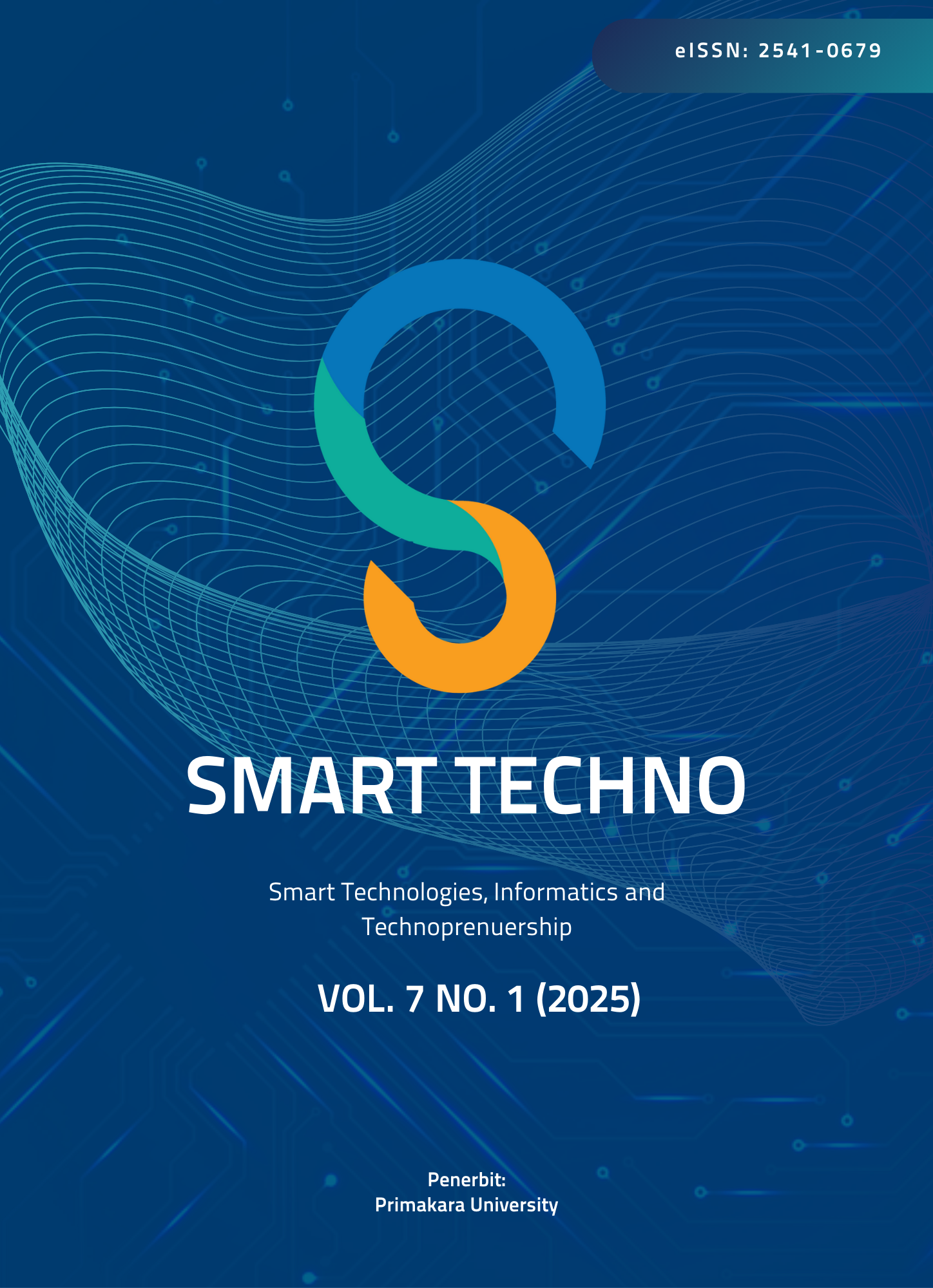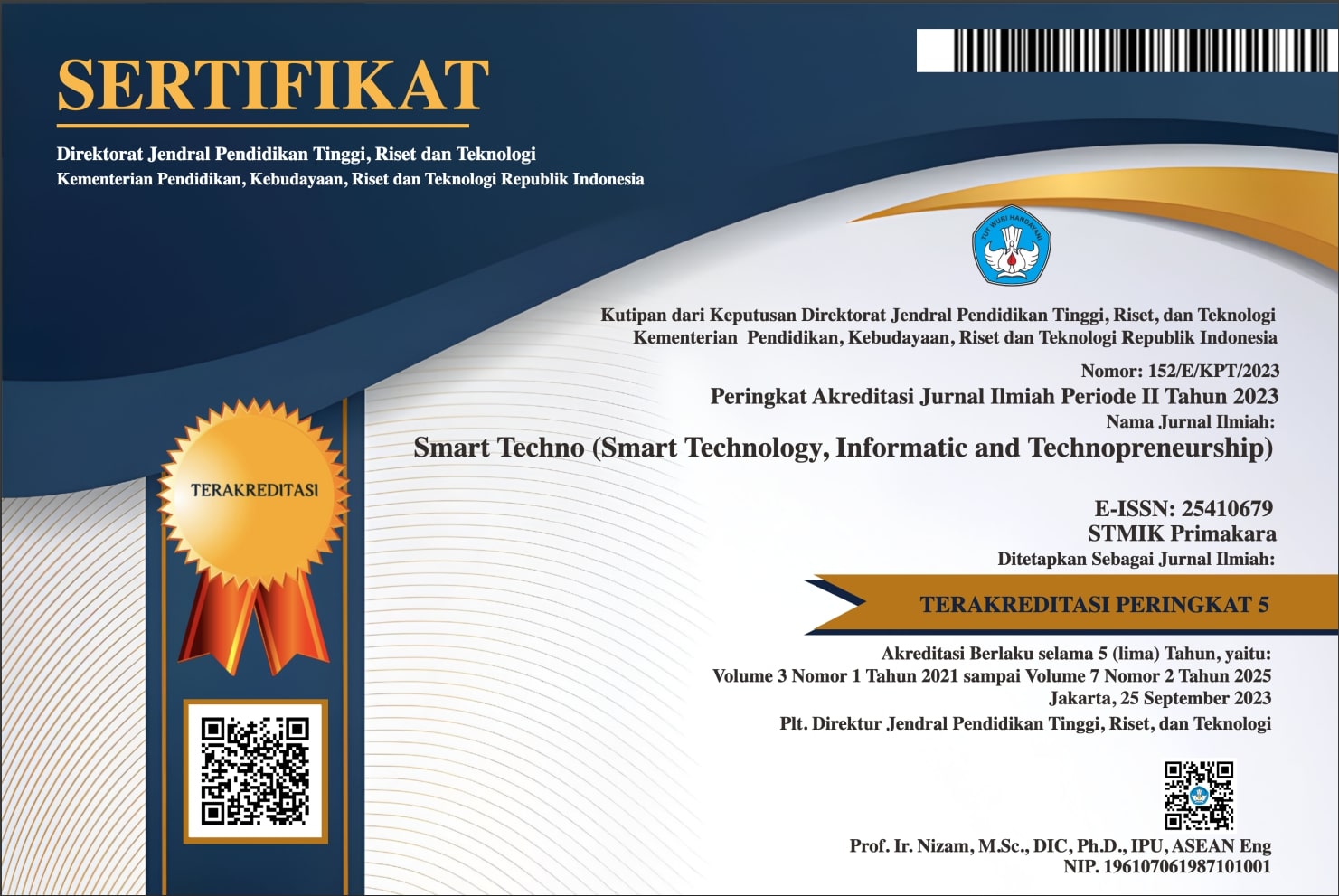The Implementation of Copilot-Based Artificial Intelligence (AI) Through Collage Techniques in Illustration Design
Abstract
The development of artificial intelligence (AI)-based illustrations, specifically using Copilot, in the creative industry has had a significant impact, opening new opportunities for designers to create visual works more efficiently and innovatively. The advantage of AI in analyzing and generating images makes the creative process faster and more varied. As this technology evolves, I am interested in developing a collaboration between AI-based collage techniques and illustration design. This research uses a descriptive analysis approach that combines observation, interviews/questionnaires, documentation, and literature study. Observations are made on the AI processes that I have created. Additionally, questionnaires are distributed to students from the Visual Communication Design department at Universitas Primakara to assess the importance and benefits of this technique in completing their assignments. The results of this research are expected to provide insights into whether this technique can help enhance creativity and efficiency in creating illustration designs, as well as contribute to the development of a more innovative creative industry.
Downloads
References
Alfian, T. (2023). Sejarah Desain Grafis Barat. UNISNU PRESS.
Amalia, R. N., & Dianingati, R. S. (2022). Pengaruh jumlah responden terhadap hasil uji validitas dan reliabilitas kuesioner pengetahuan dan perilaku swamedikasi. Generics: Journal of Research in Pharmacy, 2(1), 9-15. https://doi.org/10.14710/genres.v2i1.12271.
Andhita, P. R. (2021). Komunikasi visual (Vol. 1). Zahira Media Publisher.
Aulianshah, K. A. (2023). Tinjauan dan Respons Kreatif terhadap Penggunaan AI dalam Ilustrasi Media Promosi dan Dampak yang Ditimbulkannya. In Seminar Nasional Institut Kesenian Jakarta (IKJ) (Vol. 2, pp. 395-411). https://doi.org/10.52969/seminarikj.v2i.83.
Budi, H., Sasany, N., & Fu’adin, A. (2024). Analisis dampak penggunaan artificial intelligence (AI) dalam kampanye politik terhadap art illustrator. Kohesi: Jurnal Multidisiplin Saintek, 3(4), 1311-3025.
Herlijanto, A. A. (2024). Dinamika Perubahan Industri Kreatif di Era Artificial Intelligence. Prosiding Semnaskom-Unram, 6(1), 218-225.
Hibatulwafi, F., & Laksmi, L. (2024). Fenomena Penggunaan Generative AI dalam Perilaku Pencarian Informasi Praktisi Teknologi. Media Pustakawan, 31(2), 141-155.
Ifadhila, I., Rukmana, A. Y., Erwin, E., Ratnaningrum, L. P. R. A., Aprilia, M., Setiawan, R., ... & Setiawan, H. (2024). Pemasaran Digital di Era Society 5.0: Transformasi Bisnis di Dunia Digital. PT. Sonpedia Publishing Indonesia.
Malau, M., Sihite, I. F., Sumanti, I. H., Desrianty, R. M., & Hutahaean, Y. S. R. (2024). Perkembangan Artificial Intelligence dan Tantangan Generasi Muda di Era Super Digitalized. Ikra-Ith Abdimas, 8(1), 251-257.
Prihartanto, T. H., & Halimawan, J. I. (2024). Pixai: Aplikasi Berbasis Generative Ai Sebagai Alat Untuk Desain Karakter Yang Efisien. Jurnal Seni dan Reka Rancang: Jurnal Ilmiah Magister Desain, 7(3), 463-472.
Priyono, D., Putra, I. N. A. S., Sutarwiyasa, I. K., Rizaq, M. C., Setiawan, I. N. A. F., & Jayanegara, I. N. (2023). Desain Komunikasi Visudal Dalam Era Teknologi: Peran Teknologi Terhadap Perkembangan DKV. PT. Sonpedia Publishing Indonesia.
Rachmad, Y. E., Wardani, K. K., Andhini, G. K., & Basiroen, V. J. (2024). Buku Ajar Manajemen Desain Komunikasi Visual (DKV). PT. Sonpedia Publishing Indonesia.
Rachmawati, I., Rosyid, D. F., Parman, S., Solihah, Y. A., & Putra, G. M. (2024). Penerapan Artificial Intelligence pada Media Desain Grafis Menggunakan Analisis Interpretasi Edmund Feldman. Jurnal Digit: Digital of Information Technology, 14(1), 66-78. https://doi.org/10.51920/jd.v14i1.372.
Rahmahafida, N. I., & Sinaga, W. B. (2022). Analisis Problematika Lukisan Ciptaan Artificial Intelligence Menurut Undang-Undang Hak Cipta. Jurnal Pendidikan Dan Konseling (JPDK), 4(6), 9688-9696.
Ridayanti, I., & Meidawaty, S. (2020). Upaya meningkatkan kreativitas anak usia dini melalui kegiatan kolase. Tarbiyat al-Aulad: Jurnal Pendidikan Islam Anak Usia Dini, 4(2), 27-44.
Sa’Adah, V. N., Satrio, V., Andreano, M. E., Siahaan, C., & Faradiba, F. (2024). Pengaruh Perkembangan AI Berbasis Desain Terhadap Kreatifitas Siswa SMK PB Soedirman 1 Jakarta, Jurusan Desain Komunikasi Visual. Phi_TERA: Journal of Physics in Teaching, Education Research and Application, 1(1), 21-28.
Copyright (c) 2025 dharma prasetya irawan

This work is licensed under a Creative Commons Attribution 4.0 International License.
Authors who publish with the Smart Techno agree to the following terms:
- Authors retain copyright and grant the journal the right of first publication with the work simultaneously licensed under a Creative Commons Attribution License (CC BY-SA 4.0) that allows others to share the work with an acknowledgment of the work's authorship and initial publication in this journal.
- Authors are able to enter into separate, additional contractual arrangements for the non-exclusive distribution of the journal's published version of the work (e.g., post it to an institutional repository or publish it in a book), with an acknowledgment of its initial publication in this journal.
- Authors are permitted and encouraged to post their work online (e.g., in institutional repositories or on their website) prior to and during the submission process, as it can lead to productive exchanges, as well as earlier and greater citation of published work. (See The Effect of Open Access)







